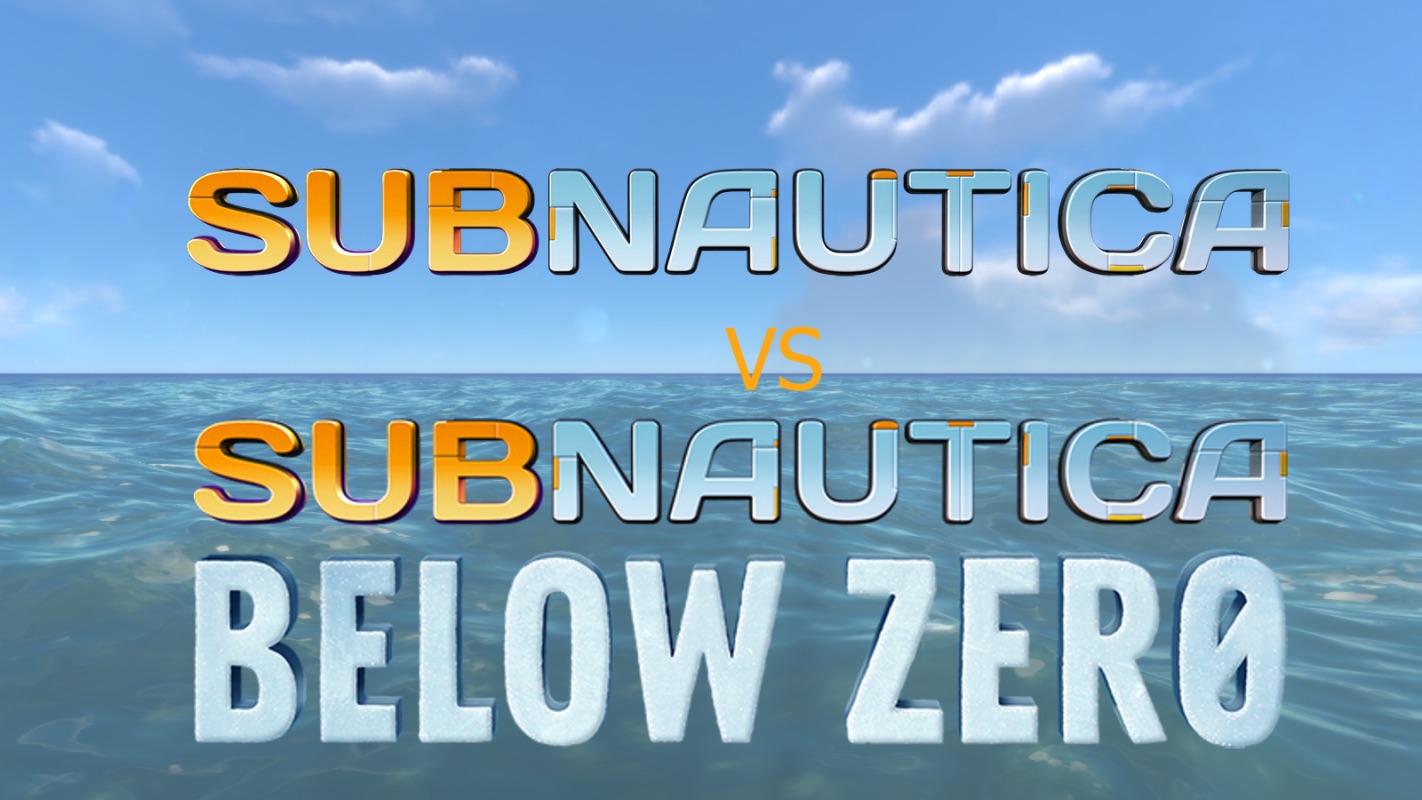Subnautica vs Subnautica Below Zero: Key Differences
 Valcu Denis
Valcu Denis
There’s a certain chill that sets in when you surface from the warm waters of Subnautica and step into the frozen biomes of Below Zero. Same universe. Two different moods. One thing’s clear: while both games share DNA, they’re anything but identical.
For anyone debating which title to play first—or returning fans curious about what sets them apart—this guide breaks it down in style. Let’s get beneath the surface.

Environment and Setting
Subnautica throws you headfirst into the tropical ocean world of planet 4546B. It's teeming with coral reefs, volcanic vents, alien leviathans, and bioluminescent creatures. The world feels alive, vibrant, and unpredictable. You’re stranded, alone, and the planet doesn’t care if you survive.
Then comes Subnautica: Below Zero, which moves you to the same planet—but further north, deep into Arctic territory. Expect glacial landscapes, icy biomes, floating icebergs, and snow-covered islands. The shift in climate isn’t just for aesthetics; it changes how you play. Cold becomes a mechanic. Hypothermia is real, and land-based exploration becomes as important as deep-sea diving.
Narrative and Character Design
In Subnautica, you play as an anonymous survivor of the Aurora crash. Silent, nameless, and alone. The story is discovered, not told. You piece it together through PDAs, wreckage logs, and environmental clues.
Below Zero takes a different route. You step into the boots of Robin Ayou, a scientist searching for answers about her sister’s suspicious death. She speaks. She reacts. There’s an emotional narrative thread, and it shapes the way the world feels. It's still about exploration—but now, there's a face behind the mask.
Core Gameplay Differences
The foundations of both games are the same: explore, collect, build, survive. But Below Zero adds and refines in smart ways.
Land Exploration: While Subnautica is almost entirely underwater, Below Zero makes land traversal a regular part of gameplay. Arctic zones, alien ruins, and research bases await on foot.
Weather Systems: In Below Zero, snowstorms, hail, and blizzards affect visibility and temperature. It’s no longer just about oxygen. Now, you’re watching your body heat too.
New Tools: The sequel introduces gadgets like the Mineral Detector, which helps you track down specific resources underground. Quality of life upgrades like this make a big difference.
Vehicles: The Seamoth and Cyclops are iconic in Subnautica. In Below Zero, they’re replaced by the modular Seatruck and the Snowfox hover bike. Both are streamlined, flexible, and designed for the varied terrain.
Biomes and Wildlife
Subnautica feels more alien, more menacing. Giant sea monsters lurk in the dark. The biomes are vast and layered—from the safe shallows to the pitch-black abyss. You never quite know what’s watching.
Below Zero has its share of dangers, but the design feels a bit more contained. Its biomes are more compact, though still beautiful and immersive. Wildlife ranges from the adorable Pengwings to the terrifying Shadow Leviathan, but overall, the ecosystem feels slightly more grounded.
Base Building and Tech Progression
Base building is central to both experiences. You construct habitats, reinforce structures, build scanners, fabricate gear, and generate power.
In Below Zero, base design gets a bit of an upgrade. You have access to new rooms like the Control Room for monitoring base stats, and you’ll find crafting a bit more efficient thanks to layout changes and new blueprints. There’s also a clearer tech progression curve that helps you feel less aimless early on.
Audio, Atmosphere, and Tone
There’s something to be said about Subnautica’s sound design—it creates tension like few games can. From the hum of your Seaglide to the distant roar of a Reaper Leviathan, every noise matters.
Below Zero adds more layers, including voice acting and scripted events, which bring more personality to the story. But it also sacrifices a bit of that raw isolation. You still feel small in a big world—but now, you’ve got a mission. A reason.
A Side-by-Side Comparison (Without the Table)
Protagonist: Silent survivor (Subnautica) vs. Robin Ayou with full voice acting (Below Zero)
Setting: Tropical ocean (Subnautica) vs. Arctic biome with land areas (Below Zero)
Storytelling: Environmental and indirect (Subnautica) vs. narrative-driven (Below Zero)
Exploration: Mostly underwater (Subnautica) vs. split between land and sea (Below Zero)
Creatures: More aggressive and alien (Subnautica) vs. more grounded and biome-specific (Below Zero)
Vehicles: Seamoth/Cyclops (Subnautica) vs. Seatruck/Snowfox (Below Zero)
Environment Hazards: Depth pressure and oxygen (Subnautica) vs. those plus cold exposure and weather (Below Zero)
Which One Should You Play First?
If you’re brand new to the series, Subnautica is still the one to start with. It’s pure, raw, and unforgettable. There’s no hand-holding. Just you, the ocean, and whatever lies below. Once you’ve gotten your sea legs, Below Zero is the natural next step. It builds on what works, smooths out rough edges, and adds narrative structure that fans of the first game will appreciate.
And if you’ve yet to experience either? Start now. Grab a Subnautica Steam CD Key at RoyalCDKeys and let the descent begin.
Final Thoughts
Both Subnautica games offer unmatched underwater survival. But they serve different tones and experiences. One’s about discovery. The other? About purpose. And each one earns its place on the ocean floor of gaming greatness.
So, which do you prefer? The sun-soaked terror of the original or the icy isolation of the sequel? Either way, the sea is waiting—and it remembers.
Check out what we’ve written recently: Top Monster Hunter: World Builds 2025
Subscribe to my newsletter
Read articles from Valcu Denis directly inside your inbox. Subscribe to the newsletter, and don't miss out.
Written by

Valcu Denis
Valcu Denis
Love writing about tech and gaming.